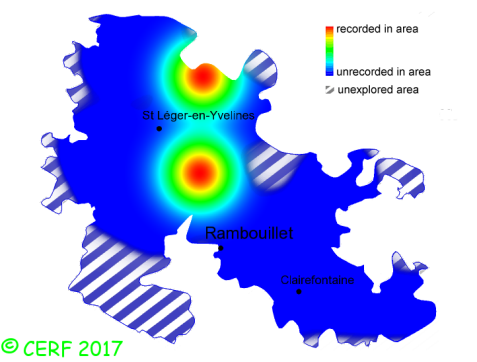|
Hygrocybe coccinea (Schaeff.:Fr.) P. Kumm.
|
common name(s) : Scarlet Waxcap, Scarlet Wax Cap
New classification: Basidiomycota/Agaricomycotina/Agaricomycetes/Agaricomycetidae/Agaricales/Hygrophoraceae
Former classification: Basidiomycota/Homobasidiomycetes/Agaricomycetideae/Tricholomatales/Hygrophoraceae
[sub-genus:Pseudohygrocybe section:Pseudohygrocybe sub-section:Coccineinae]
synonyms: Hygrophorus coccineus
(unconfirmed synonyms: Hygrocybe coccineus)
edibility : inedible
|
|
|
The cap is bright red then yellowish-ochre.
The cap surface is smooth, viscid on young specimens.
The stem is cherry red to orange-red, without ring.
The flesh is red to orange, unchanging; its taste is faint; the odour is faint;
its texture is fibrous.
The gills are orange red then orange yellow, adnate to decurrent, distant .
The spore print is white. This species is saprophytic.
It grows on the ground.
The fruiting period takes place from September to November.
| Dimensions: | width of cap approximately 4 cm (between 1 and 10 cm) |
| | height of stem approximately 5 cm (between 2 and 8 cm) |
| | thickness of stem (at largest section) approximately 6 mm (between 2 and 10 mm) |
Chemical tests : none.
Distinctive features : entirely cherry-red, later turning yellow; yellow stem base
Hygrocybe coccinea is rare and confined in the forest of Rambouillet, and is occasional, more generally speaking
.
|  | | Above : distribution map of Hygrocybe coccinea in the forest of Rambouillet |
|
page updated on 14/01/18